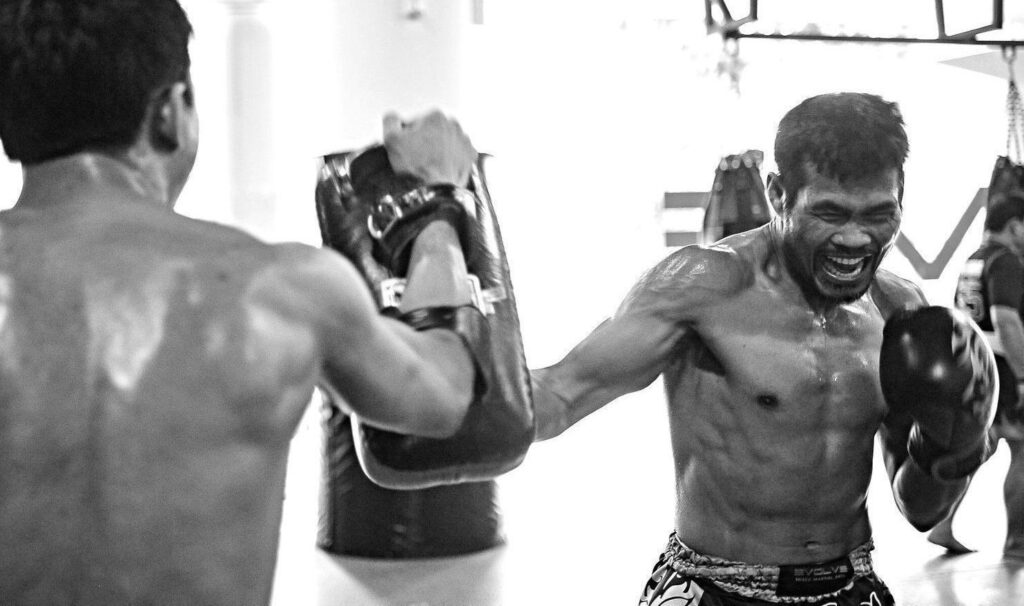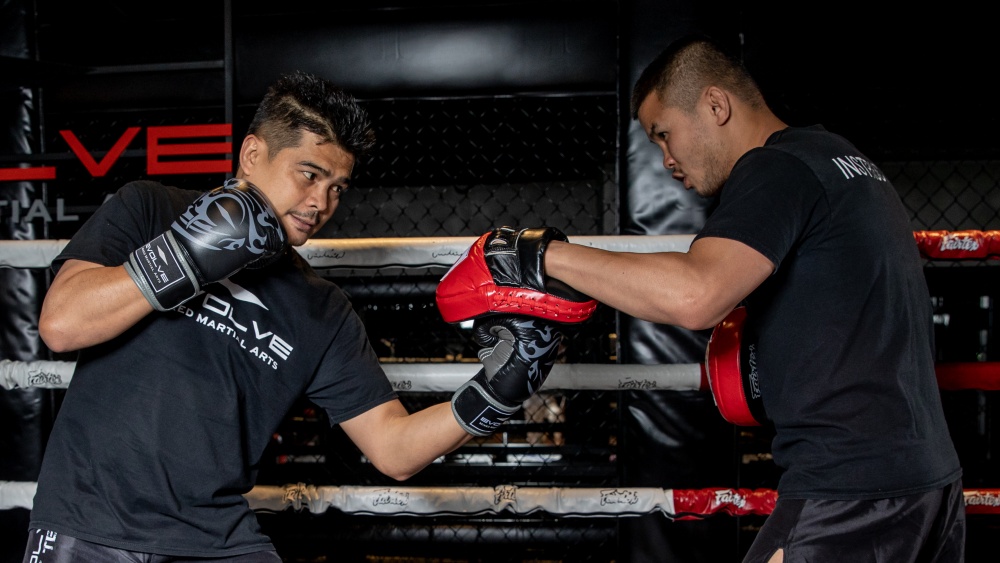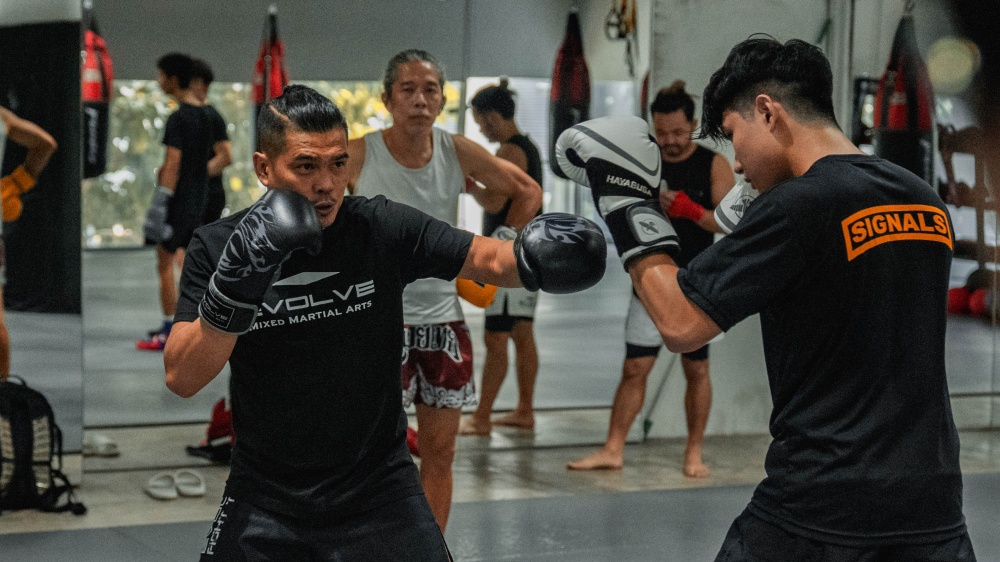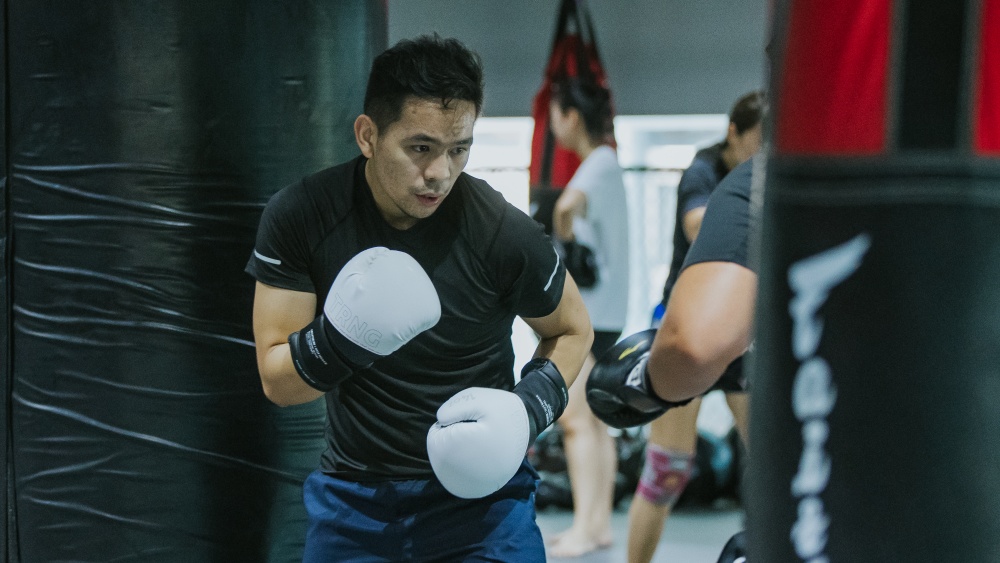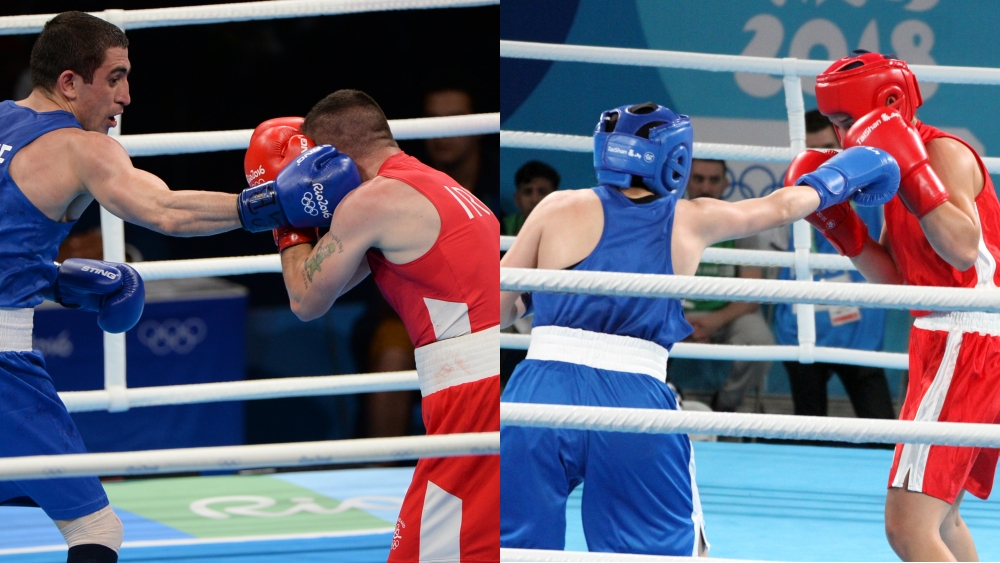In combat sports like boxing, or in hand-to-hand combat, possessing a knockout punch could be the difference between victory and defeat. Sometimes, an opponent’s skill and talent level can be offset by sheer offensive firepower and knockout potential. Having heavy hands and being able to punch hard is a great weapon to have.
Even in self-defense, it’s not enough that you are able to connect strikes on an assailant. When someone is trying to hurt you or your loved ones, the immediate goal is to incapacitate the attacker, and having a powerful knockout punch will certainly aid towards achieving that.
Having a big punch means you’re never out of it. There’s always that puncher’s chance.
Or maybe you just want to beat the high score at that cool punching game at the arcade. The bottom line is your technique can be greatly improved, and we’re here to help.
While some punchers are born with naturally heavy hands, there are ways to improve punching power. Proper technique is a prerequisite and so is constant practice, but there are a few things that people should be aware of to be able to throw the perfect punch.
Today, Evolve Daily shares The 5 Secrets to Developing a Knockout Punch.
1) Focus on technique first and not power
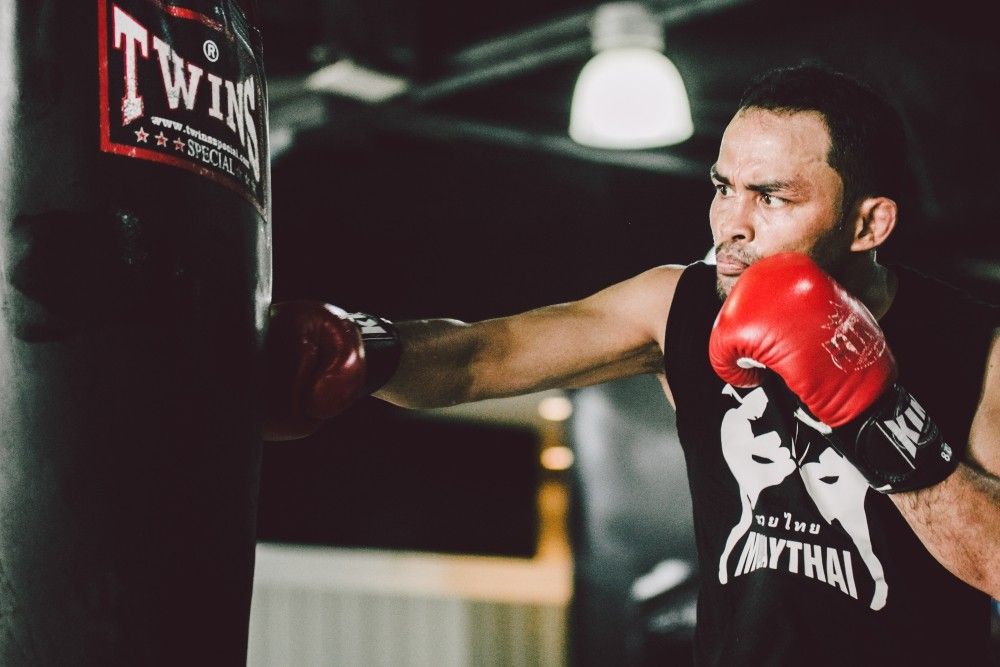
Power comes from correct form. More often than not, people focus more on throwing hard first before they even know how to throw a punch the proper way. This is actually the most common mistake. In order to generate the most power, punches have to be thrown in a correct, technical manner.
Power is generated from the legs and transferred from the torso to the fist, until the final moment of impact. Boxing’s biggest punchers have tremendously stocky legs and solid foundations. Mike Tyson, Manny Pacquiao, George Foreman, Rocky Marciano – these legends all throw punches with incredible technique.
When you begin to understand that technique precedes power, only then will your punches become more powerful. As always, practice is the only way to perfect your technique, and constant repetition will ensure that your technique is etched into muscle memory.
2) Shift your weight correctly
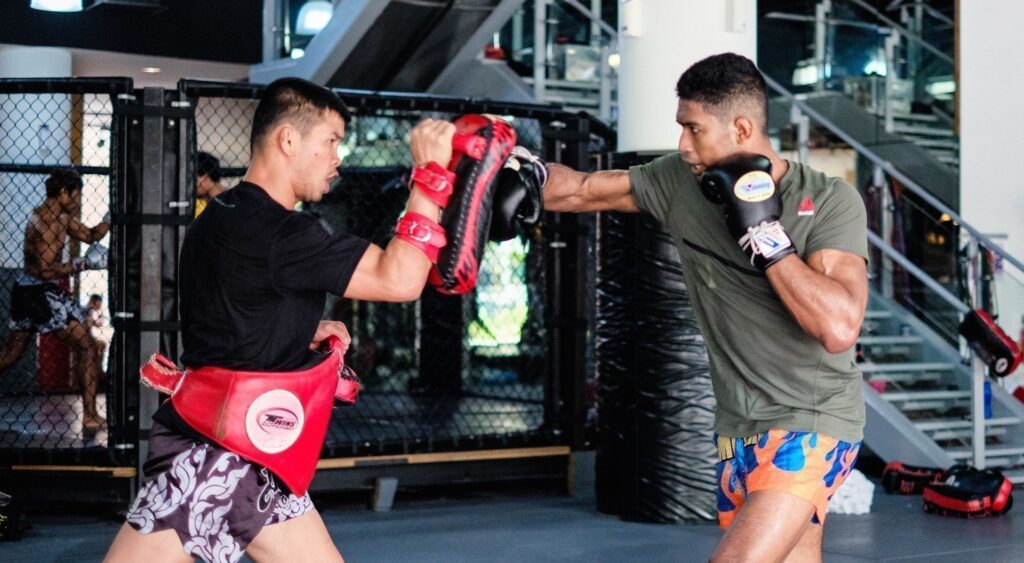
As stated previously, power is generated from a fighter’s base. In order to transfer power from the legs to the torso and inevitably to the fist, there must be a proper shifting of weight. This is achieved by executing a smooth, fluid motion that allows power to travel from the base to the fist with maximum torque and velocity.
First, you must strengthen your base by sitting down slightly before throwing a punch. With elbows tucked in, the punching arm is launched towards the target.
Simultaneously, the rear foot is pivoted towards the target (when punching with your rear hand) as the torso twists inward. This movement allows all the energy to flow directly from the base to the fist. This is the correct method of shifting weight.
Pro Tip: Avoid cocking the fist back before punching as this telegraphs the attack and gives opponent more time to defend.
3) Punch through your target but don’t forget your defense
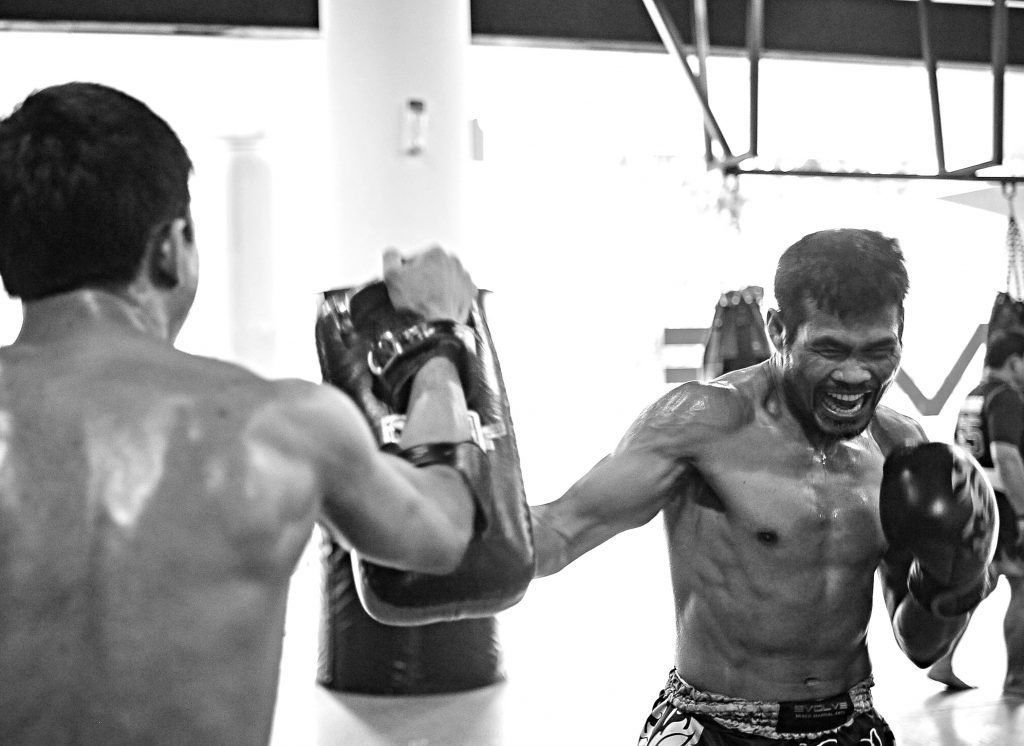
Part of being able to punch hard is having the confidence to throw the punch without fear of retaliation. This is achieved by remaining defensively aware even while throwing a punch.
One of the most common counters to a straight punch is a simultaneous straight punch from the opponent. To make sure this counterpunch is well-defended, the off hand must be brought up to guard the chin and the temple. With this specific defense in place, a fighter is now able to throw a punch without worry of getting hit with a counterpunch.
By making sure your defense is in place, a fighter can punch straight through the target with full speed and force. This not only maximizes power on impact but also greatly increases the likelihood of the punch landing clean.
Most people tend to forget that defense is part of a good offense, but in reality, it is integral to success.
4) Remain loose and relaxed with proper footwork
It doesn’t matter how hard you can punch if you can’t land. The ability to remain loose and relaxed makes sure that a fighter is constantly on the balls of his feet, and can move in and out of danger in an actual fight.
When fighters are tense and stiff, most of the time his punches are telegraphed, and an opponent can see them coming. They say the hardest knockout punches are the ones that you don’t see. Remaining loose and relaxed in a fight is essential to maintaining the element of surprise, as an opponent will have difficulty reading your offense.
It goes without saying that proper footwork is necessary to be able to keep calm and collected in a fight. Having proper footwork will ensure that a fighter can switch between offense and defense seamlessly, maintaining an aura of unpredictability that is part of a good strategy.
5) Practice makes perfect
Of course, nothing great ever comes without constant practice. The saying, “Practice makes perfect” is one of the truest statements in all of sports. The greatest fighters in history have all been known to possess incredible work ethic, spending hours upon hours in the gym honing their craft.
To be able to throw a devastating knockout punch, constant daily practice is required. Even the world’s best fighters continue to develop their technique every day, despite already reaching a high level. Practice keeps fighters sharp and ready for battle.
The more you practice your knockout punch, the better you will get at it. The best tool in the gym to work on your knockout punch is the bag. Whether it’s the heavy bag, the double-ended bag, or the uppercut bag, constant and correct bag work will only serve to enhance punching power.
Self-defense is a basic human right for everyone to have and you can only increase your punching power through purposeful practice. So, which of these secrets are you going to start focusing on?
